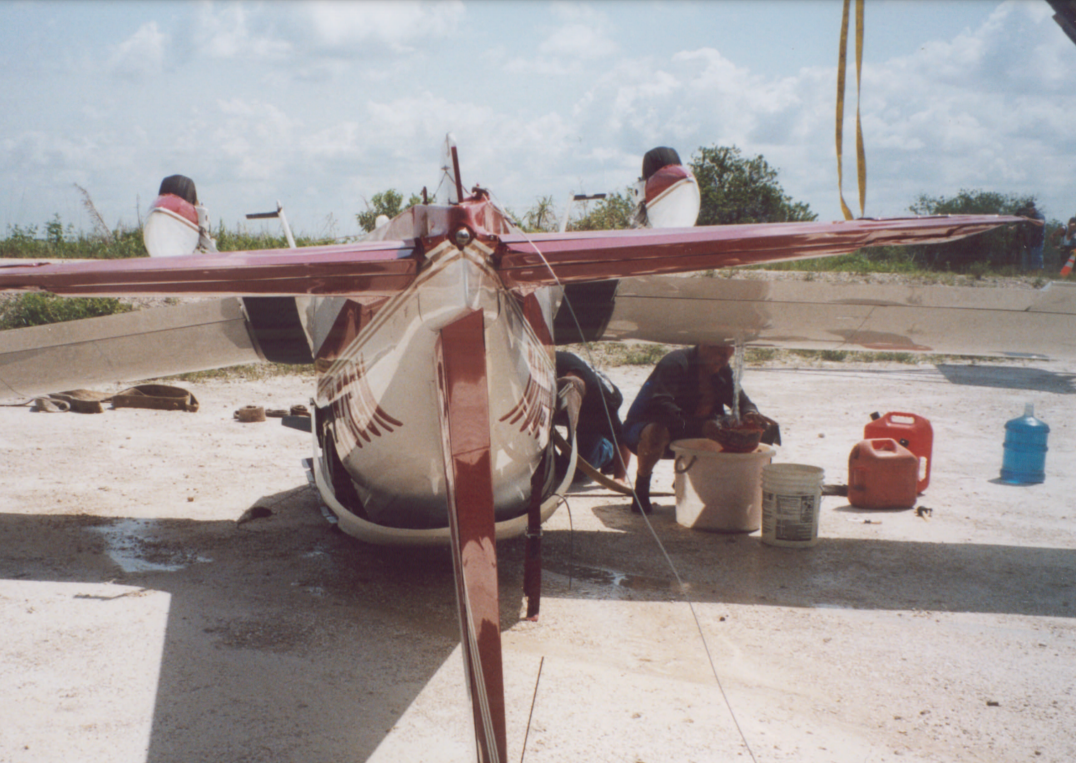
ASN Wikibase Occurrence # 345492
This information is added by users of ASN. Neither ASN nor the Flight Safety Foundation are responsible for the completeness or correctness of this information.
If you feel this information is incomplete or incorrect, you can submit corrected information.
| Date: | Friday 12 July 2002 |
| Time: | 13:32 |
| Type: |  Grumman American AA-5 Tiger |
| Owner/operator: | Private |
| Registration: | N6024L |
| MSN: | AA5--0124 |
| Total airframe hrs: | 3246 hours |
| Engine model: | Lycoming O-320-E2G |
| Fatalities: | Fatalities: 2 / Occupants: 2 |
| Aircraft damage: | Minor |
| Category: | Accident |
| Location: | Everglades, near Boca Raton, FL -
 United States of America United States of America
|
| Phase: | En route |
| Nature: | Private |
| Departure airport: | Pahokee-Palm Beach County Glades Airport, FL (PHK/KPHK) |
| Fort Lauderdale-Executive Airport, FL (FXE/KFXE) | |
| Investigating agency: | NTSB |
| Confidence Rating: |
On July 12, 2002, about 1332 eastern daylight time, an American General AA-5, N6024L, registered to a private individual, operating as a Title 14 CFR Part 91 personal flight, nosed over while ditching in the Florida Everglades, in the vicinity of Boca Raton, Florida, following an emergency descent, following a loss of engine power. Visual meteorological conditions prevailed and no flight plan was filed. The aircraft received minor damage, and both private-rated pilots were fatally injured. The flight departed from Palm Beach County Glades Airport, Pahokee, Florida, the same day, about 1300.
The accident airplane nosed over while ditching in the Florida Everglades following an inflight emergency, and an emergency descent. Both private-rated pilots were fatally injured during the ditching when the airplane flipped over,and remained inverted and submerged in about 4 feet of water. Examination of the airframe and flight controls did not reveal any anomalies. Examination of the engine revealed that the interior of the #4 cylinder assembly had incurred mechanical damage, and both the top of the piston and the cylinder head exhibited multiple indentations. In addition, a hole was found to be present in the top of the piston. The No. 4 exhaust valve tulip was found to have separated from the stem, and the oil pressure screen was found to contain a small amount of aluminum particles. During disassembly, fragments of the exhaust valve tulip were found within the combustion chamber and in the exhaust system, and the fragments varied in size and shape, with about 50 percent of the tulip being missing. In addition, the examination revealed that various steel components within the power section exhibited corrosion. Corrosion was found on the crankshaft, camshaft, and accessory gears. The bearing surfaces within the power section exhibited evidence of dirt/particle embedment. The NTSB retained the parts pertaining to the #4 cylinder assembly, to include fragments of the No. 4 exhaust valve, 8 tappets, and plungers, and the center main bearing, for further examination, but extensive damage to the valve stem and head surfaces precluded any determination of a fracture mechanism. Research into airplane's maintenance history revealed that the last engine overhaul had been performed 23 years prior to the accident. At the time of the accident, the engine had accumulated 1246.49 hours in service. Lycoming Service Instruction No. 1009AQ indicates that the O-320 Series engine should be overhauled after 2000 hours time in service. Engines that do not accumulate the hourly time between overhauls, are recommended to be overhauled in the twelfth year. In addition, in 1983 Lycoming changed the part number for the exhaust valve for the accident engine, and Lycoming's Service Bulletin 240 suggests that the old exhaust valves, made from martensitic stainless steel, should be replaced with the new part, made from a nickel-base superalloy, at the time of overhaul, which records indicate had not been performed. "Lycoming Mandatory Service Bulletin No. 388B" addresses the subject: Procedure to Determine Valve and Guide Condition, and a review of maintenance records for subject engine showed that on July 2, 1999, the engine had been given a "Lycoming 400-hour valve inspection."
Probable Cause: The owner/operator's failure to perform an overhaul or comply with a service bulletin 240 which would have probably precluded the continued installation of the number four cylinder exhaust valve and its subsequent failure.
Accident investigation:
 |
|
Sources:
NTSB
Location
Images:



Revision history:
| Date/time | Contributor | Updates |
|---|---|---|
| 13-Sep-2023 14:43 | Captain Adam | Added |
| 13-Sep-2023 14:43 | Captain Adam | Updated |
Corrections or additions? ... Edit this accident description
The Aviation Safety Network is an exclusive service provided by:


 ©2024 Flight Safety Foundation
©2024 Flight Safety Foundation